Starting your dance journey can feel overwhelming. With so many gear options and resources out there, it’s easy to get stuck. You might worry about choosing the wrong shoes or showing up unprepared for your first class. These fears can stop you from stepping onto the dance floor. But don’t let them hold you back!
Imagine feeling confident and ready for your first dance class. Picture yourself moving smoothly, wearing the perfect gear, and knowing exactly what to bring. It’s all possible with the right tips and tools. You just need a clear guide to help you get started and stay prepared.
This blog shares the best dance gear and resources for beginners. From essential shoes to must-have accessories, you’ll learn everything you need to know. Whether you’re dancing at home or in a studio, these tips will set you up for success. Let’s get you ready to shine on the dance floor!
Table of Contents
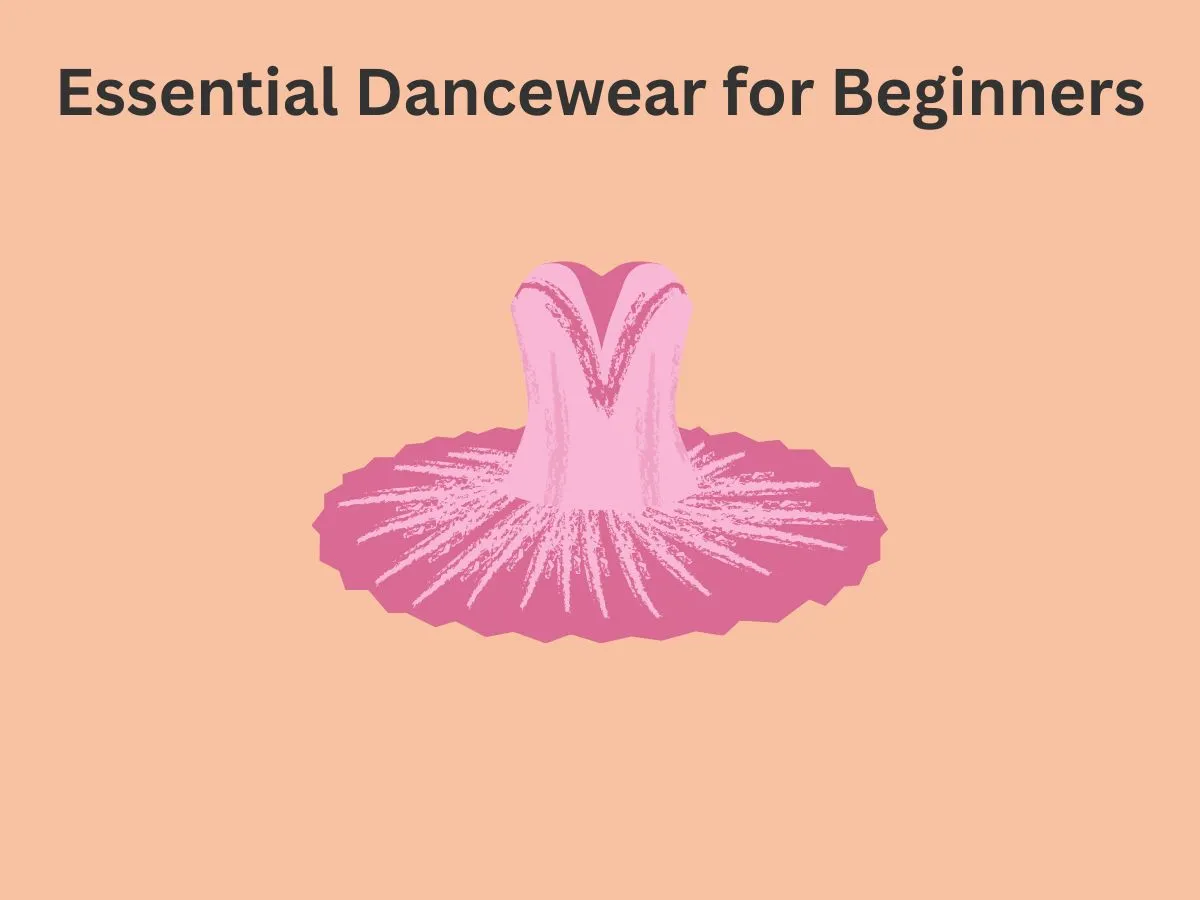
Start with the Basics: Essential Dancewear for Beginners
When starting your dance journey, having the right dancewear is key to feeling comfortable and confident. A dance leotard is the foundation of your outfit, available in various colors and cuts. It’s important to check with your dance school for specific guidelines on what to wear. Pair your leotard with ballet tights, typically pink for women and black for men, to complete the look. These basics ensure you’re ready to move freely and focus on your steps.
For beginners, simplicity is key. Choose a leotard that fits well and feels comfortable. Avoid overly complicated designs or fabrics that restrict movement. Tights should also fit snugly but not too tight, allowing for flexibility. As you progress, you can explore different styles and colors. Starting with the basics helps you build confidence and ensures you’re dressed appropriately for your first classes.
Having the right dancewear isn’t just about looking the part—it’s also about functionality. Proper attire helps your instructor see your movements clearly, allowing for better feedback. It also keeps you comfortable as you learn new steps. Investing in quality dancewear sets you up for success and makes your dance experience more enjoyable.
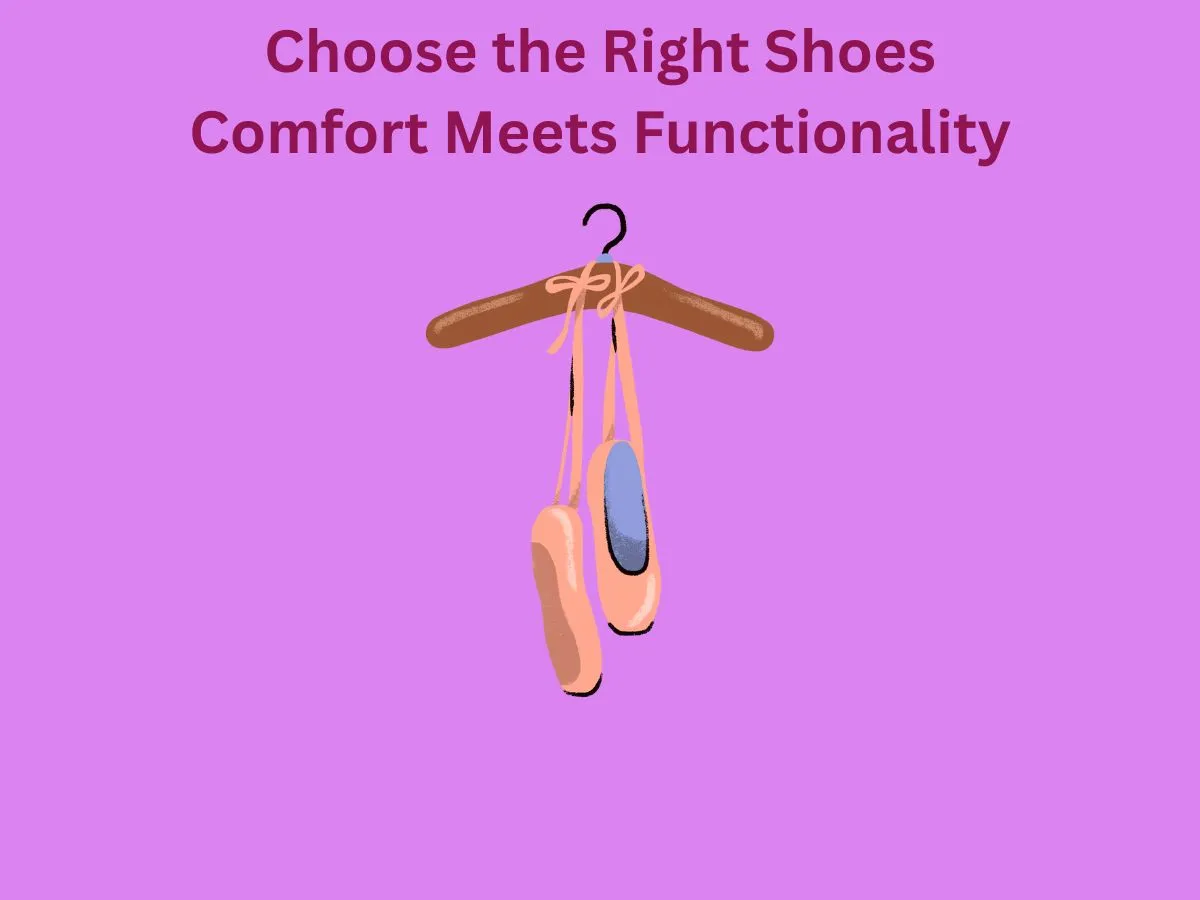
Choose the Right Shoes: Comfort Meets Functionality
Choosing the right dance shoes is crucial for both comfort and performance. For ballet beginners, leather or canvas ballet slippers are the most common options. Leather slippers are durable and provide more resistance, helping to strengthen the feet. Canvas slippers are lightweight and breathable, making them a popular choice for many dancers. Make sure your shoes fit snugly but not too tight, allowing for flexibility and movement.
When trying on dance shoes, test them by walking and performing basic steps. Proper fit ensures you can move comfortably and avoid injuries. Pay attention to the sole—split sole shoes offer better arch support and flexibility, while full sole shoes provide more stability for beginners. Your shoes should feel like a natural extension of your feet, allowing you to focus on your technique.
Investing in the right shoes from the start sets you up for success. They provide the support and flexibility needed to learn and perform dance steps effectively. Whether you’re in a class or practicing at home, the right shoes make all the difference. Take the time to find the perfect pair, and your feet will thank you.
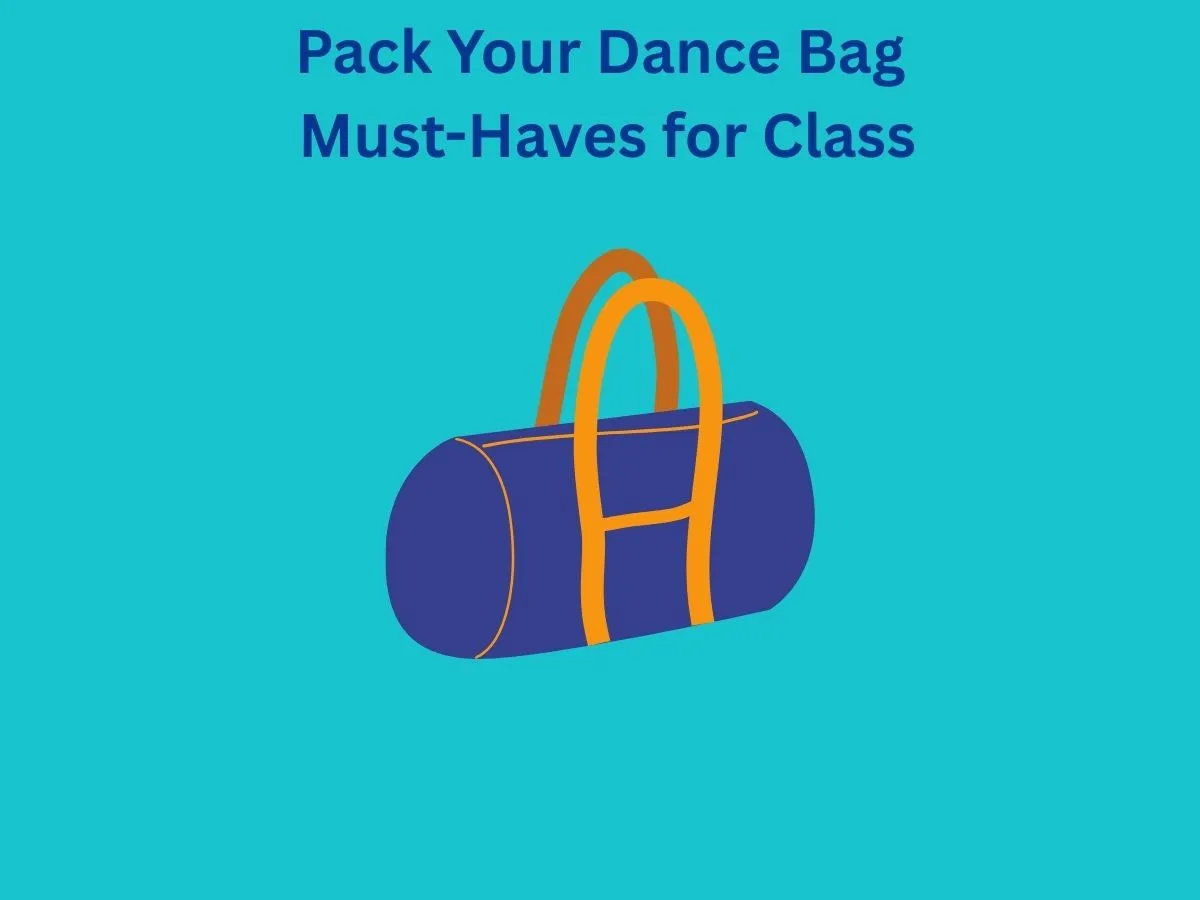
Pack Your Dance Bag: Must-Have Items for Every Class
A well-packed dance bag ensures you’re prepared for every class. Start with the essentials—your dance shoes, tights, and leotard. Having an extra set of each is a good idea in case of rips or spills. Hair accessories like bobby pins, hair ties, and a brush are also crucial to keep your hair neat and out of your face during class.
Don’t forget to pack a towel to stay fresh and dry during intense sessions. A mini first-aid kit with band-aids and antiseptic wipes is handy for minor injuries. Healthy snacks and a water bottle keep you fueled and hydrated throughout your practice. Staying prepared helps you focus on your dance without interruptions.
Keeping your dance bag organised makes it easier to find what you need quickly. Use separate compartments for shoes, clothes, and accessories. A reusable bag for wet or dirty items keeps the rest of your gear clean. Being organised ensures you’re ready to dance whenever inspiration strikes. Pack smart, and you’ll always be prepared for your next class.
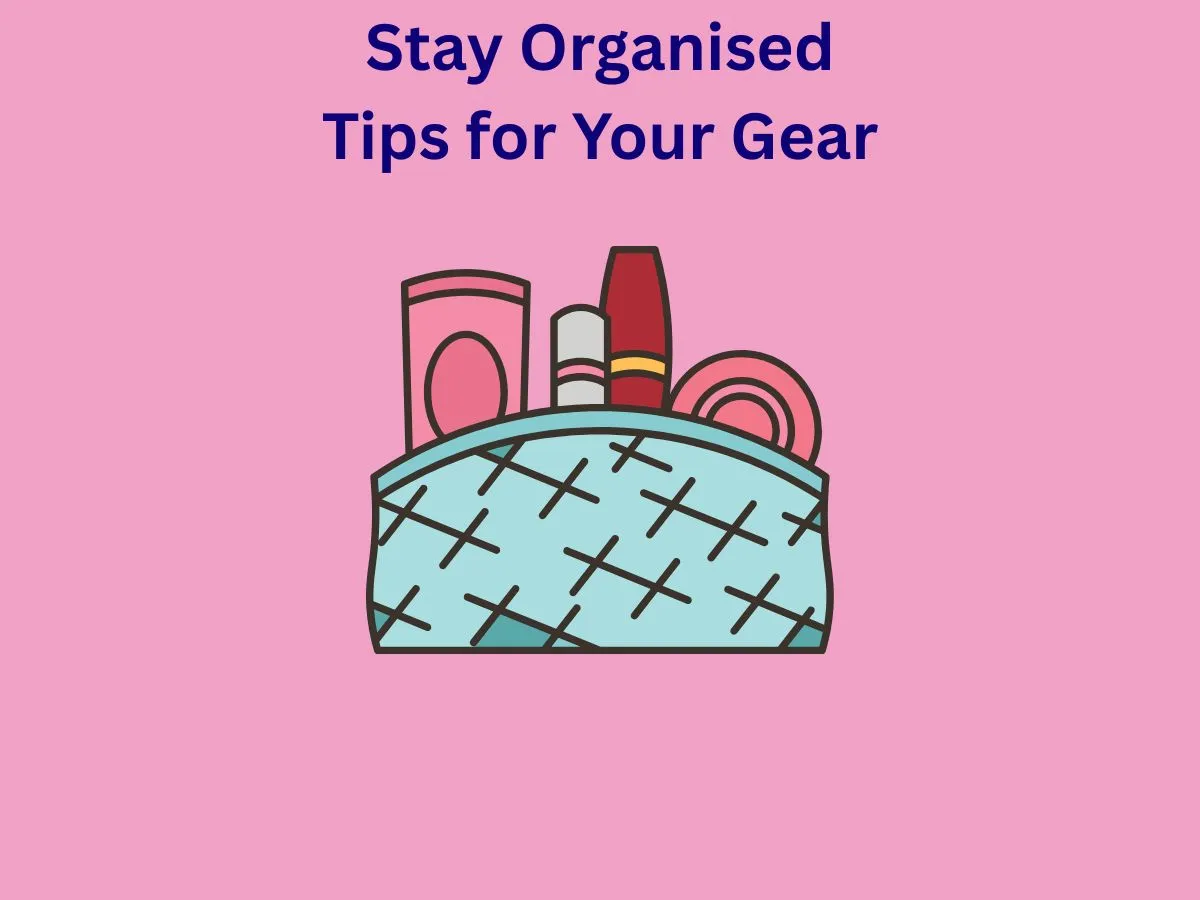
Stay Organised: Tips for Keeping Your Gear in Check
Keeping your dance gear organised ensures you’re always ready for class. Start with a dedicated dance bag that has compartments for different items. Use zip-lock bags or small pouches to group similar items, like hair accessories or shoes. This makes it easy to find what you need quickly without rummaging through your bag. Staying organised saves time and reduces stress before class.
Labelling your gear can also help keep things in order. Use tags or markers to identify your shoes, tights, and other essentials. This is especially useful if you’re sharing a space with other dancers. Keeping your items labeled prevents mix-ups and ensures you always have your own gear ready to go. A little effort in organising goes a long way in making your dance experience smoother.
Regularly check your dance bag to make sure everything is in place. Replace any worn-out items and restock essentials like extra tights or hair ties. Keeping your gear organised and well-maintained helps you focus on dancing rather than worrying about missing items. A tidy bag is a dancer’s best friend, so make it a habit to stay on top of your organisation.
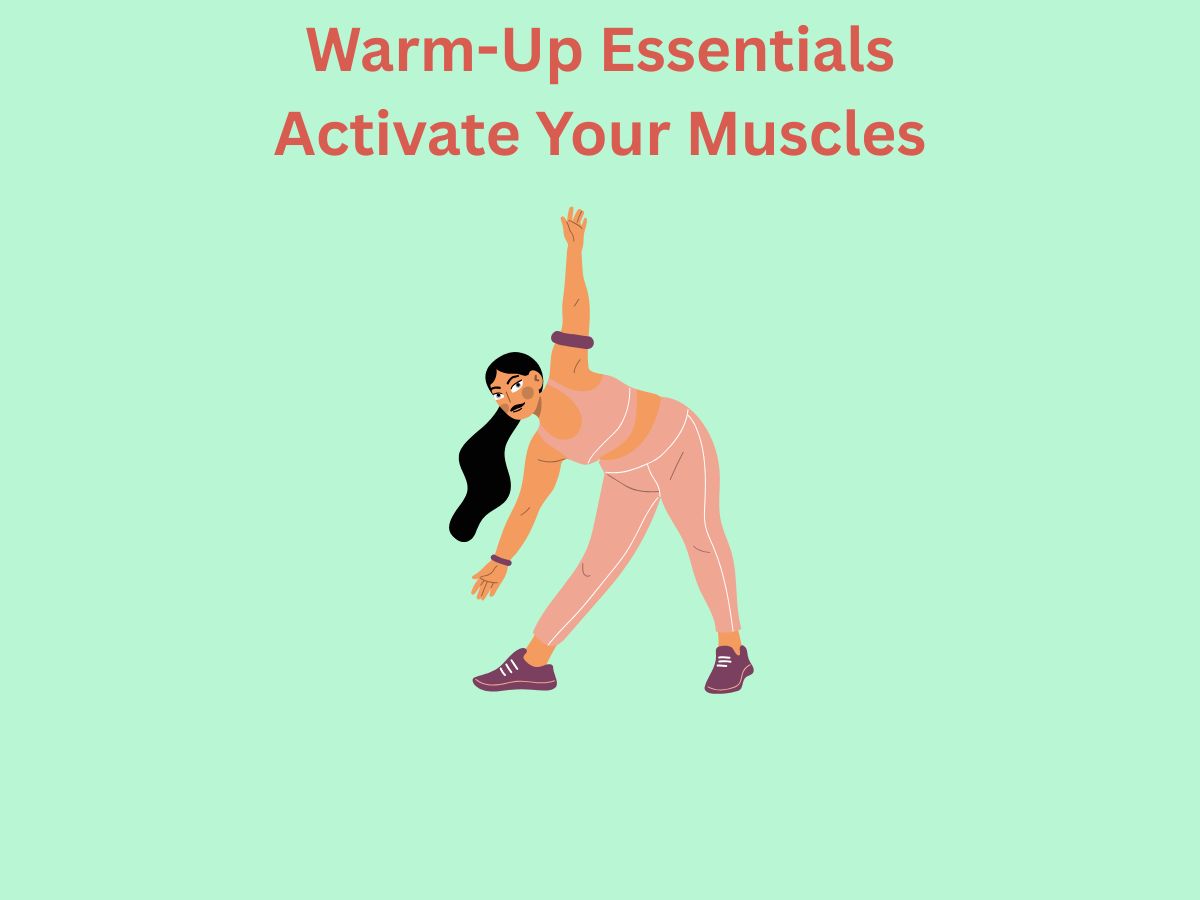
Warm-Up Essentials: Keep Your Muscles Ready to Move
Warming up before dancing is crucial to prevent injuries and improve performance. Start with light cardio like jumping jacks or jogging in place to get your heart rate up. This helps increase blood flow to your muscles, preparing them for more intense movements. A good warm-up sets the stage for a successful dance session.
Stretching is another key part of warming up. Focus on dynamic stretches like leg swings and lunges to improve flexibility and range of motion. These movements mimic the actions you’ll perform in class, making them especially effective. Take your time with each stretch to ensure your muscles are properly warmed up and ready to move.
Don’t forget to include exercises that target specific areas, like calf raises or shoulder rolls. These help activate smaller muscle groups that are often used in dance. A thorough warm-up routine not only prepares your body but also helps you mentally focus on the class ahead. Spend a few minutes warming up, and you’ll feel more confident and ready to dance.
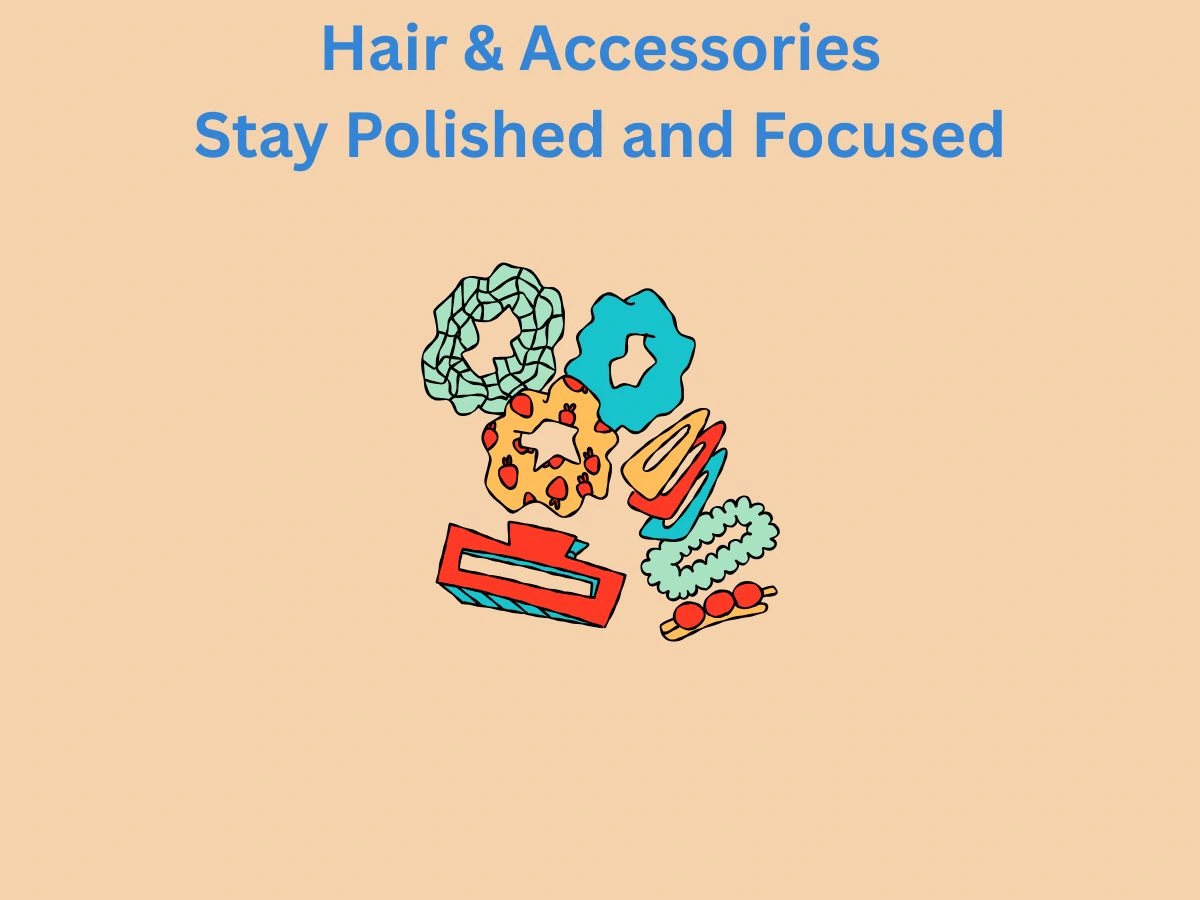
Hair and Accessories: Look Polished and Stay Focused
Keeping your hair neat and secure is essential for staying focused during dance. Use hair ties, bobby pins, and hair nets to create a tidy bun or ponytail. These accessories keep your hair out of your face, allowing you to move freely without distractions. A polished look also helps your instructor see your movements clearly for better feedback.
Choose accessories that match your style and comfort. For ballet, opt for simple hair nets or bun covers. For more energetic styles like hip-hop, consider headbands or snap clips. Having the right accessories ensures your hair stays in place no matter how intense the dance. It’s a small detail that makes a big difference in your performance.
Don’t forget to pack extra hair ties and pins in your dance bag. Hair accessories can break or get lost, so having backups is always a good idea. Keeping your hair secure and stylish not only boosts your confidence but also helps you stay focused on your dance. A little attention to detail goes a long way in making you look and feel your best.
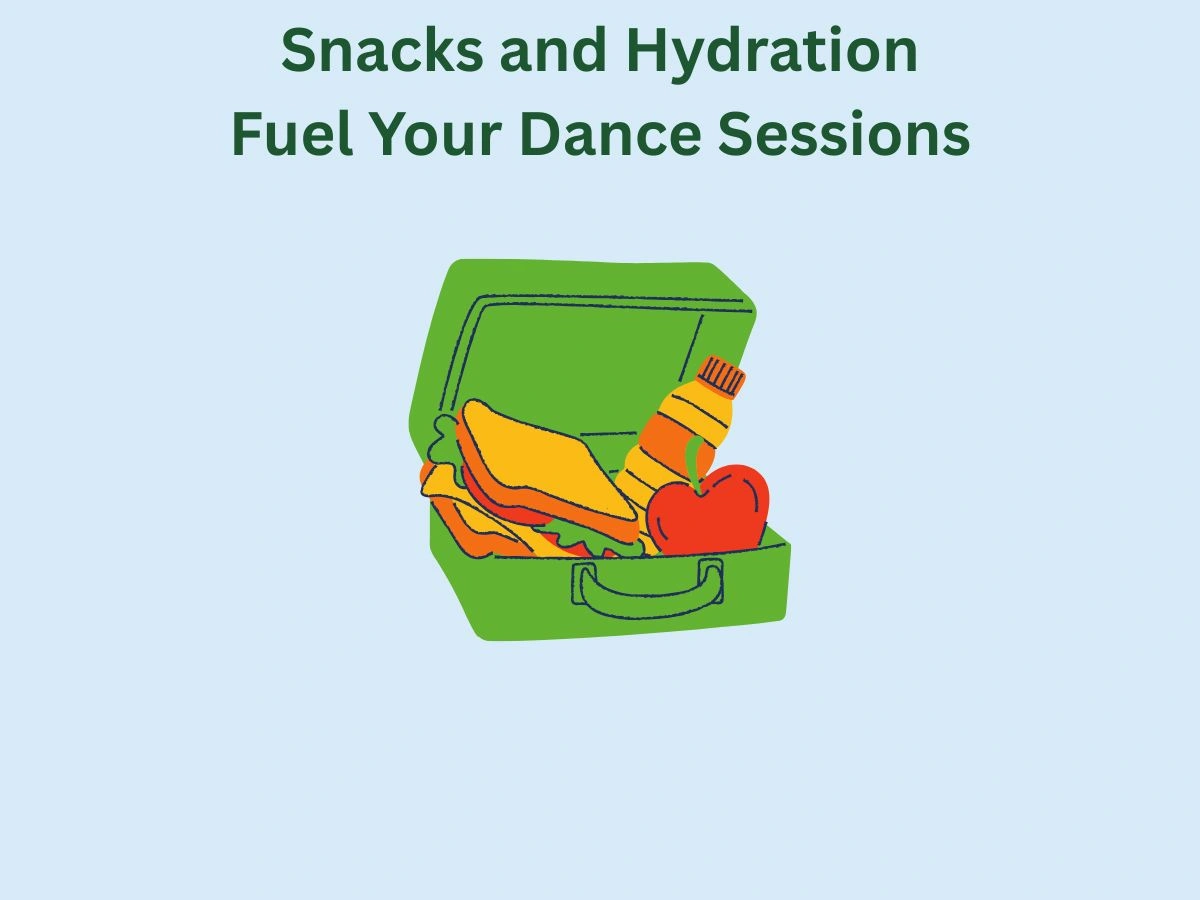
Snacks and Hydration: Fuel Your Dance Sessions
Staying hydrated and fueled is essential for peak performance during dance sessions. Always carry a reusable water bottle to ensure you can drink water throughout your practice. Dehydration can lead to fatigue and decreased focus, so sip water regularly, especially during intense routines. Adding a pinch of salt or a splash of electrolyte mix can help replenish lost minerals and keep your energy levels up.
For snacks, choose options that are easy to digest and provide sustained energy. Fresh fruit, nuts, or granola bars are great choices that won’t weigh you down. Avoid sugary snacks that can cause energy crashes. Pack a small snack in your dance bag for quick refueling during breaks. Staying nourished helps you maintain stamina and perform at your best.
Balancing hydration and nutrition ensures you can dance longer and with more energy. It’s a simple yet effective way to take care of your body and improve your performance. Keep these essentials handy, and you’ll be ready to tackle any dance session with confidence.
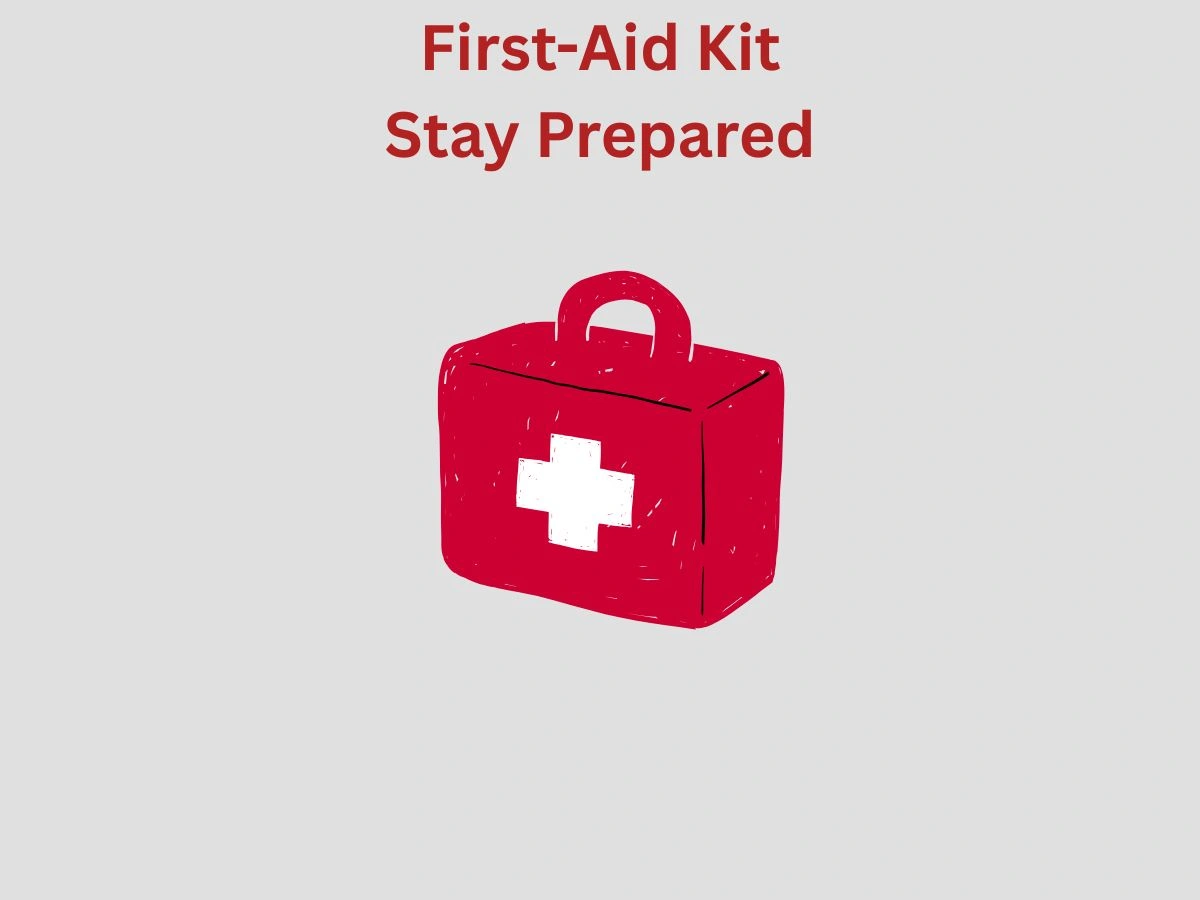
First-Aid Kit: Be Prepared for Minor Mishaps
A well-stocked first-aid kit is a must-have for every dancer. Include essentials like bandages, antiseptic wipes, and instant cold packs to handle minor injuries. Blisters, cuts, and sprains can happen, but being prepared allows you to address them quickly and get back to dancing. Keep your kit in your dance bag so it’s always within reach.
Add items like toe tape for blisters and pain relievers for sore muscles. These small additions can make a big difference in managing discomfort during or after class. It’s also helpful to include a pair of scissors and safety pins for quick fixes. A first-aid kit ensures you’re ready for any small emergencies that might arise.
Being prepared with a first-aid kit gives you peace of mind and helps you stay focused on your dance. It’s a simple way to take care of yourself and ensure minor mishaps don’t disrupt your routine. Keep your kit updated and restock items as needed to stay ready for anything.
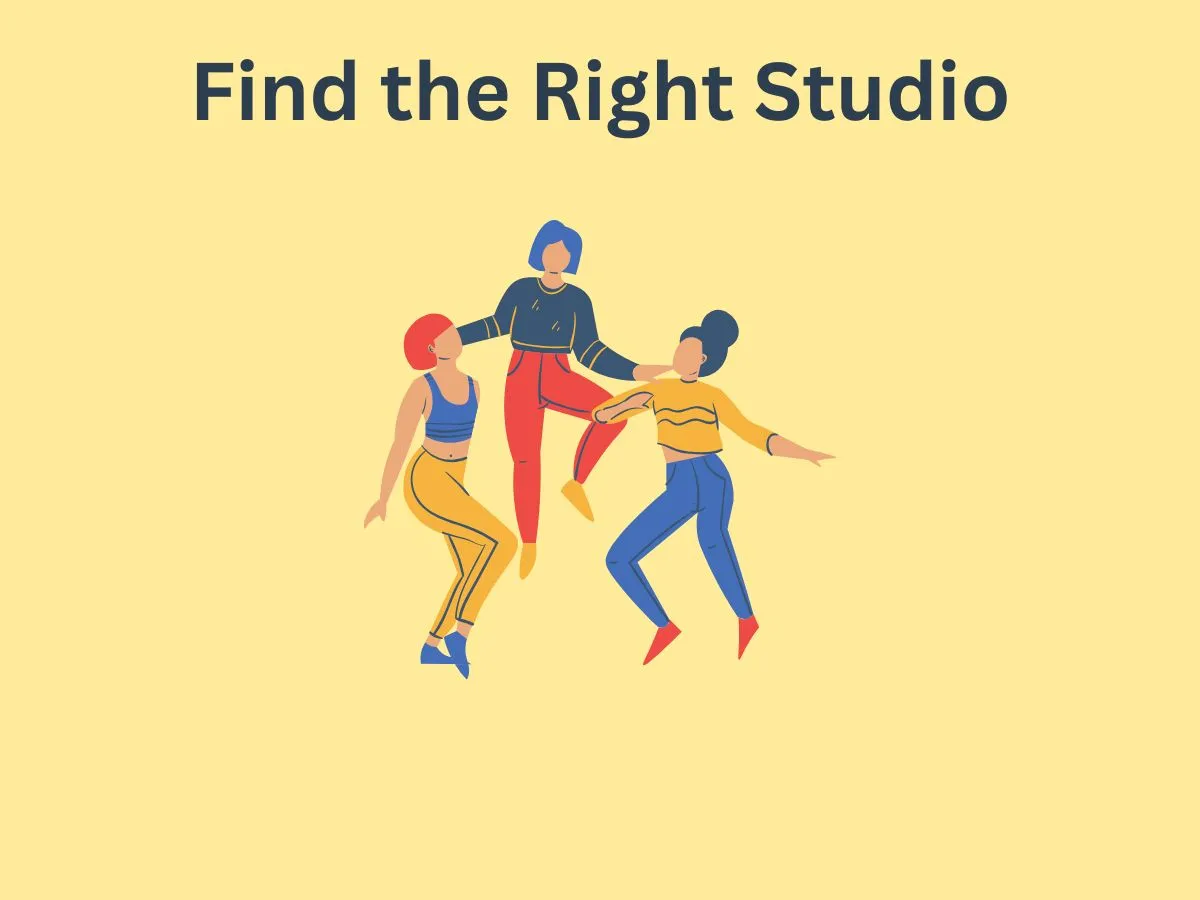
Find the Right Studio: Resources for Beginner Dancers
Choosing the right studio is key to starting your dance journey on the right foot. Look for studios that offer beginner-friendly classes and experienced instructors. A welcoming environment helps you feel comfortable as you learn the basics. Check online reviews or visit the studio to get a sense of the community and teaching style.
Many studios provide trial classes or open houses, which are great opportunities to try before you commit. Look for studios that offer a variety of styles and levels, so you can explore different types of dance. A good studio will have clear schedules, reasonable pricing, and supportive staff to guide you.
Finding the right studio sets the foundation for a positive dance experience. It’s where you’ll learn, grow, and connect with others who share your passion. Take your time to research and choose a studio that feels like the perfect fit for your goals and interests.
Conclusion:
You’re now equipped with the essentials to start your dance journey with confidence! Remember, the right gear and preparation can make a big difference in your dance experience. Don’t be afraid to experiment and find what works best for you. Dancing is about expressing yourself, so enjoy the process of discovering your unique style.
If you have any questions or need more advice on getting started, feel free to reach out to me at info@nandismedia.com. I’m here to help you take your first steps into the exciting world of dance.
FAQs:
What’s the most important item for a beginner dancer?
Comfortable, well-fitting dance shoes are crucial for proper technique and injury prevention.
How often should I replace my dance shoes?
Replace them when you notice wear on the soles or they no longer provide proper support, typically every 6-12 months for regular dancers.
What should I eat before a dance class?
Light, easily digestible snacks like fruit or nuts about an hour before class can provide energy without causing discomfort.
How can I prevent blisters when dancing?
Wear properly fitting shoes, use blister prevention tape, and gradually break in new shoes.
Is it necessary to wear a leotard for all dance styles?
Not always. Check with your studio for specific dress code requirements for each dance style.
How do I choose the right dance style as a beginner?
Try different styles through trial classes to find what you enjoy most and suits your physical abilities.
What’s the best way to organise my dance bag?
Use separate compartments or small bags within your main bag to keep items organised and easily accessible.
How important is warming up before dance class?
Very important. Proper warm-up reduces injury risk and improves performance.
Can I learn to dance if I have no prior experience?
Absolutely! Many studios offer beginner classes designed for those with no previous dance experience.
How long does it typically take to see improvement in dance skills?
With regular practice, you can start seeing improvements in a few weeks, but significant progress may take several months.